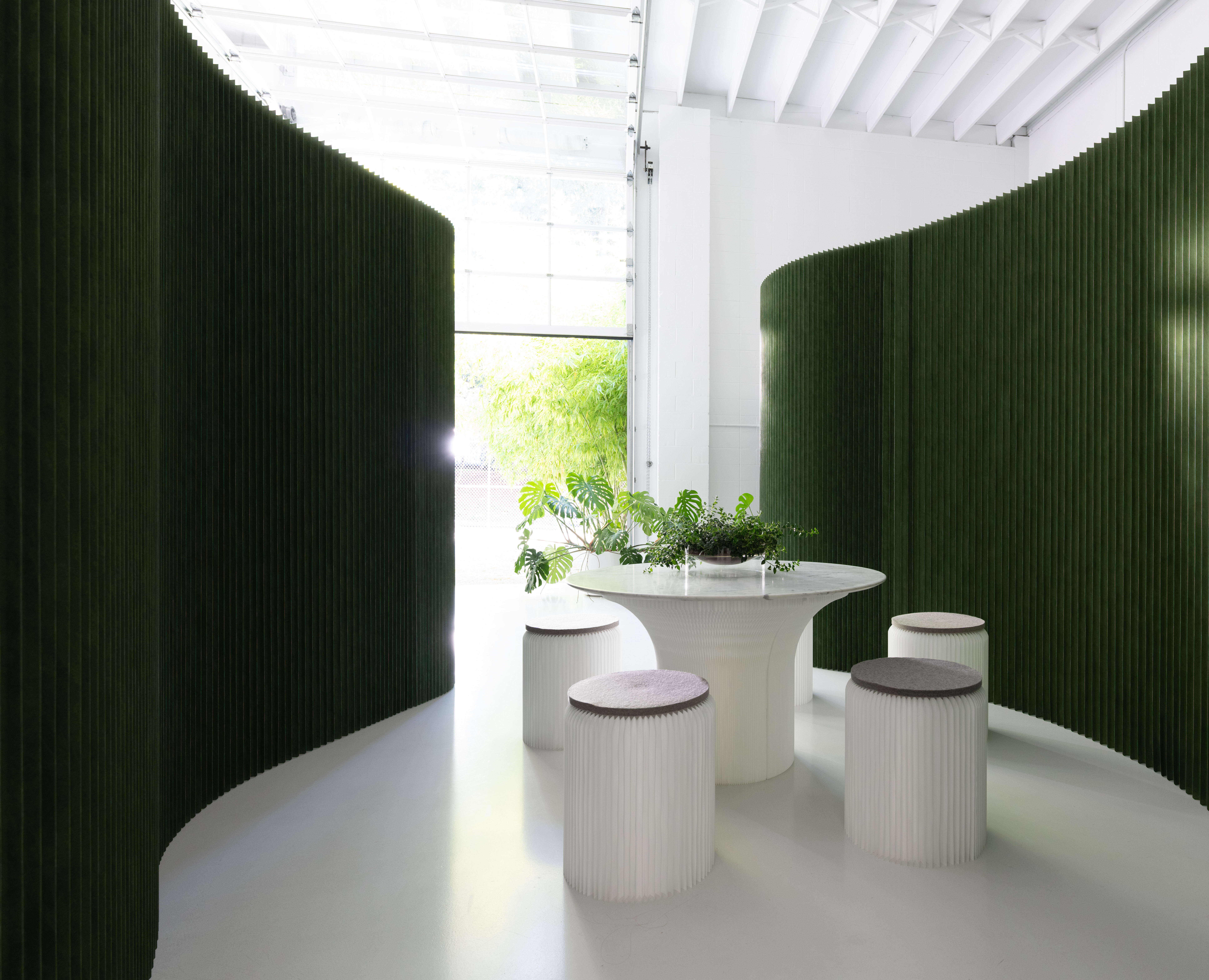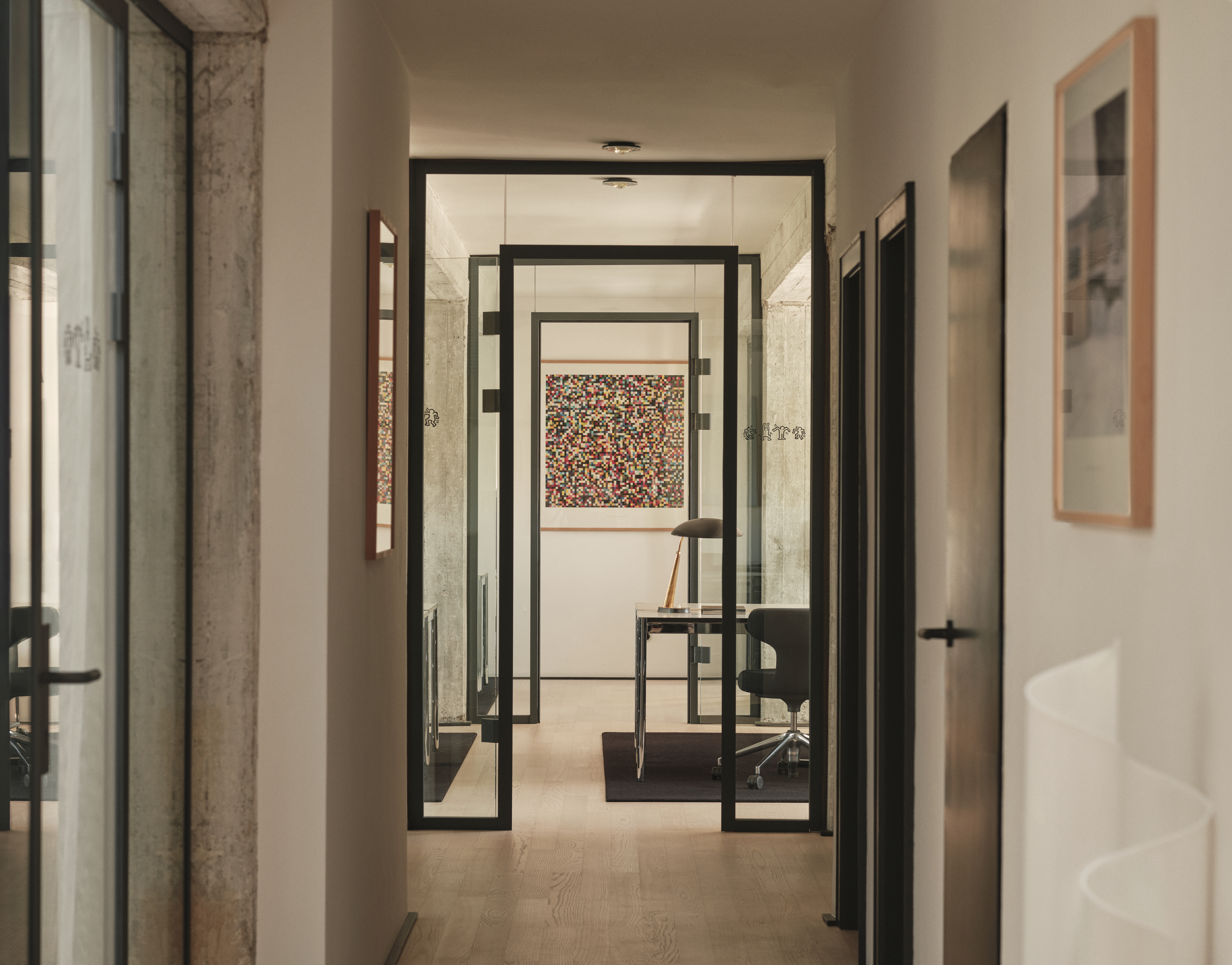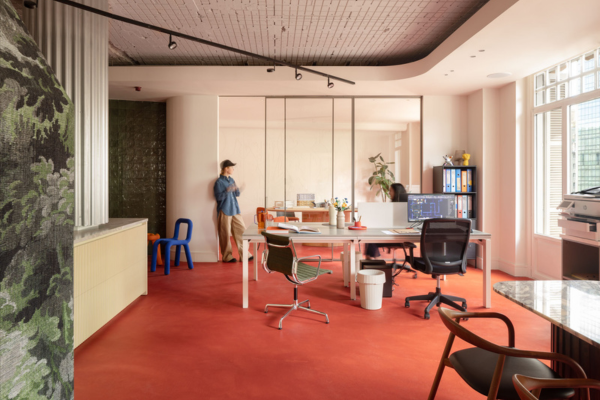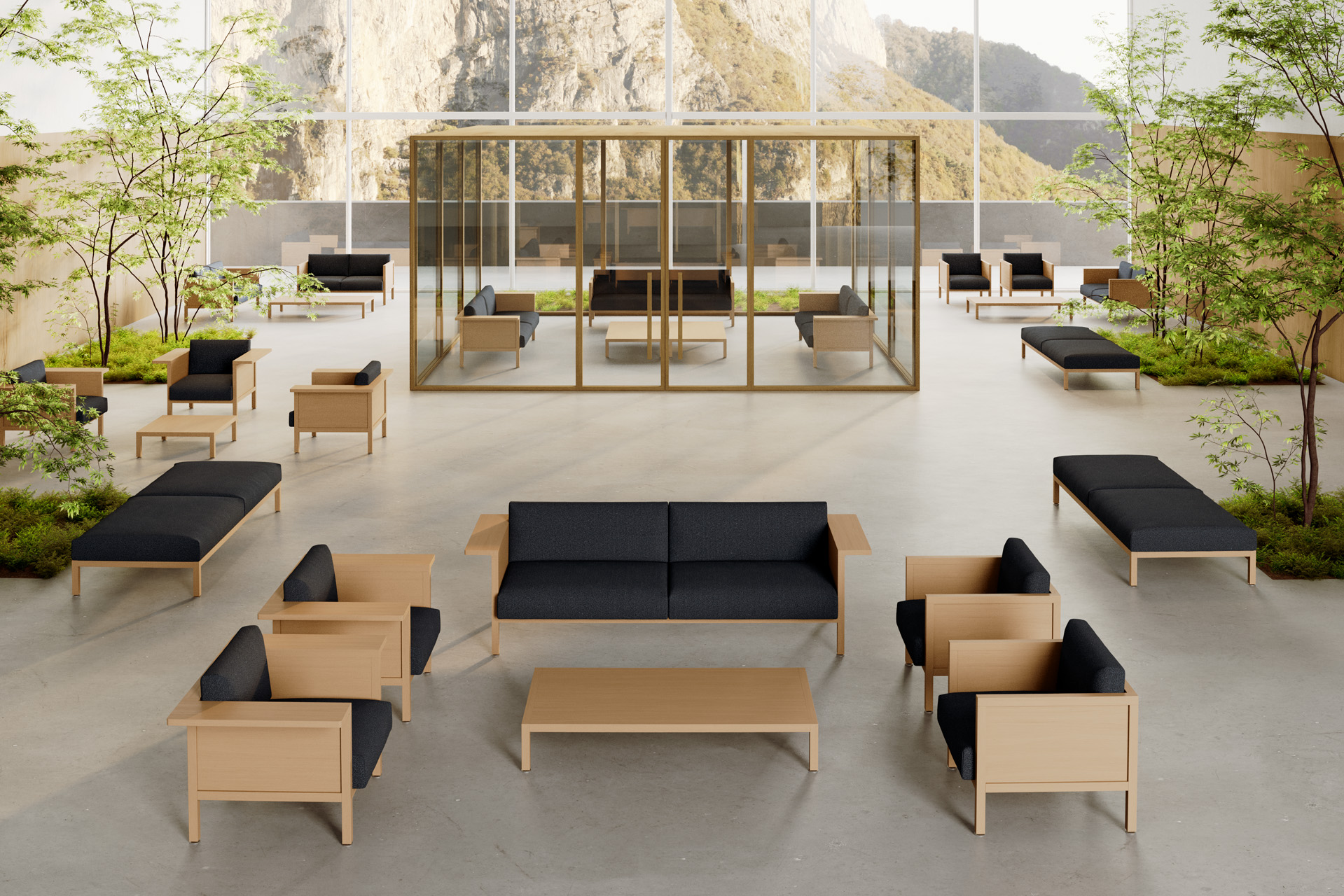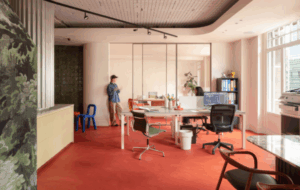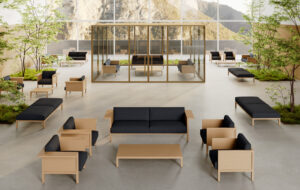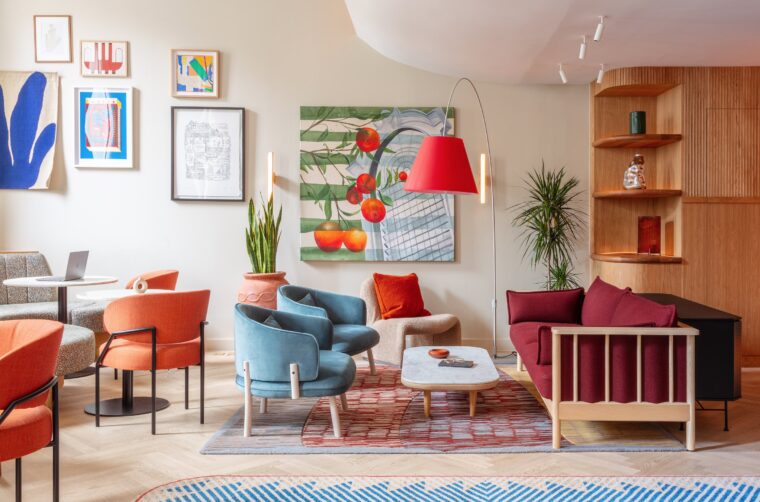
At the Club Quarters hotel in St Paul’s, interior design studio Holloway Li layered storied design details and homely comforts over office functionality to create a co-working space that you’ll never want to leave
Walking into the newly refurbished Club Quarters St Paul’s in London, your eye is drawn to the impressive relief of a carved cherry-wood wall, contemporary in design but replete with mid-century warmth. Opposite, the irregular green glaze of artisanal tiles from Naples form the backdrop to the hotel’s slick self-check-in area, reception counter and resident barista.
Above is a cloud-like pendant light, crafted in collaboration with London lighting designer Joe Armitage, and ahead is the sort of lounge area that sucks you in; a symphony of colourful upholstered seating revolving around curved booths, a vast communal table, cosy rugs and wooden accents. Clusters of artworks fill the walls – two of which, commissioned from local artist Phoebe Boddy, depict the strange incidence of orange trees in the grounds of the neighbouring cathedral. It’s a masterclass in designing for protracted dwell time.
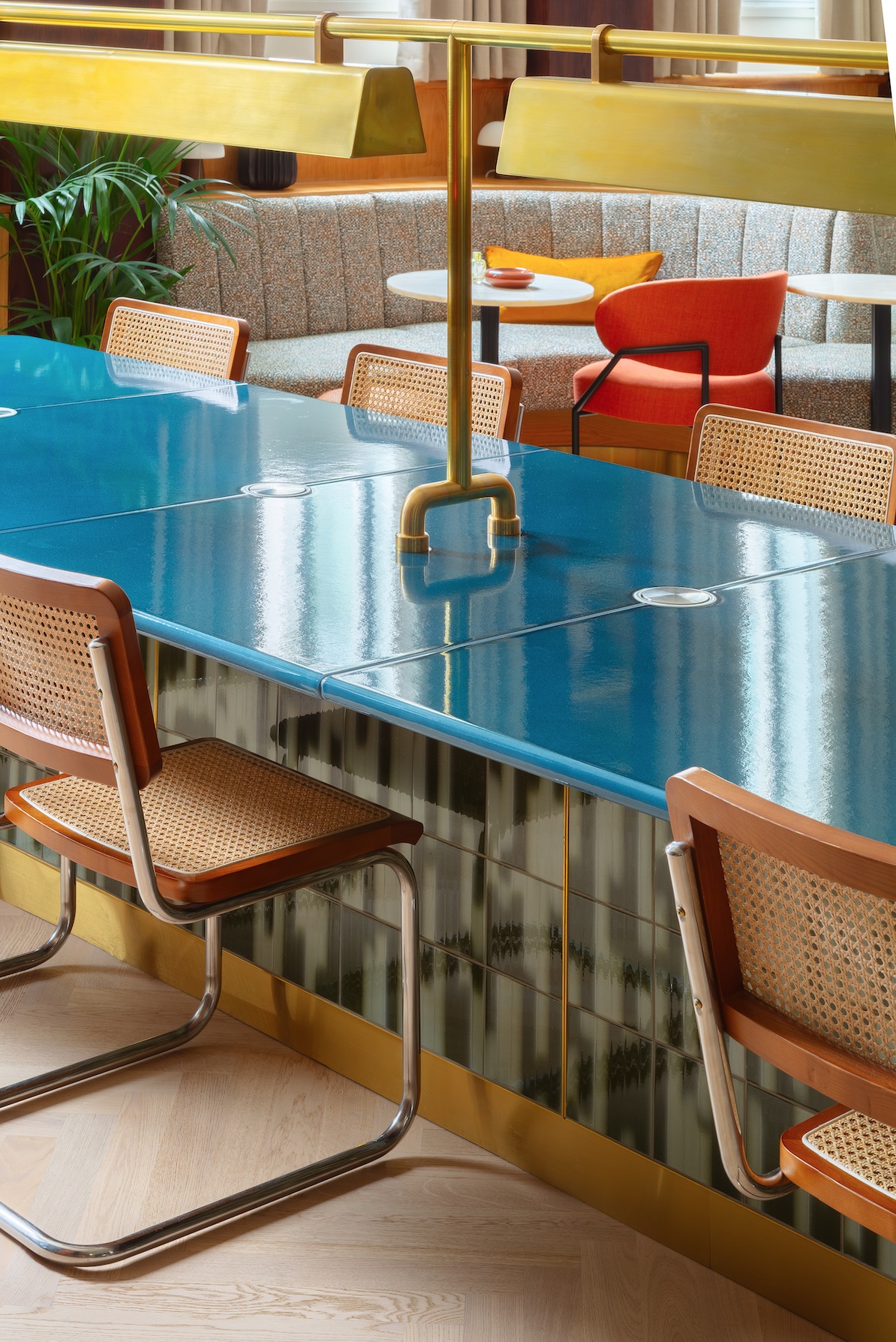
Club Quarters is a transatlantic chain of hotels whose mission is to bring business travellers affordably into the beating heart of their destination city and allow them to get ‘straight to the things that matter’, while furnishing them with essential comforts and a sense of place. To this end, the hotels have become well-organised spaces with timeless design and streamlined services, occupying prime locations in New York, Chicago, San Francisco, Boston, Washington DC and London. It’s a formula that has been winning for the group since the 1990s. That is, until recently. Before 2020, big-box bookings with the likes of Deloitte were the norm; when Covid came along, subscriptions vanished.
As with many businesses, a stratospheric change in consumer behaviour has meant survival depends on responding to new demands. “People are more conscious of interiors as something that is a value-add for them when it comes to a hotel, so it is about having to adapt. Staff hold more power in where they stay, so you need their buy-in,” explains Alex Holloway, one half of London interior design studio Holloway Li. The hospitality group has turned to Holloway and his partner, Na Li, in order to evolve the offer in the St Paul’s outpost and three other sites in the UK and US. “There was a need to augment the lounges to become high-quality workspaces that transition into a casual lounge space at night.”
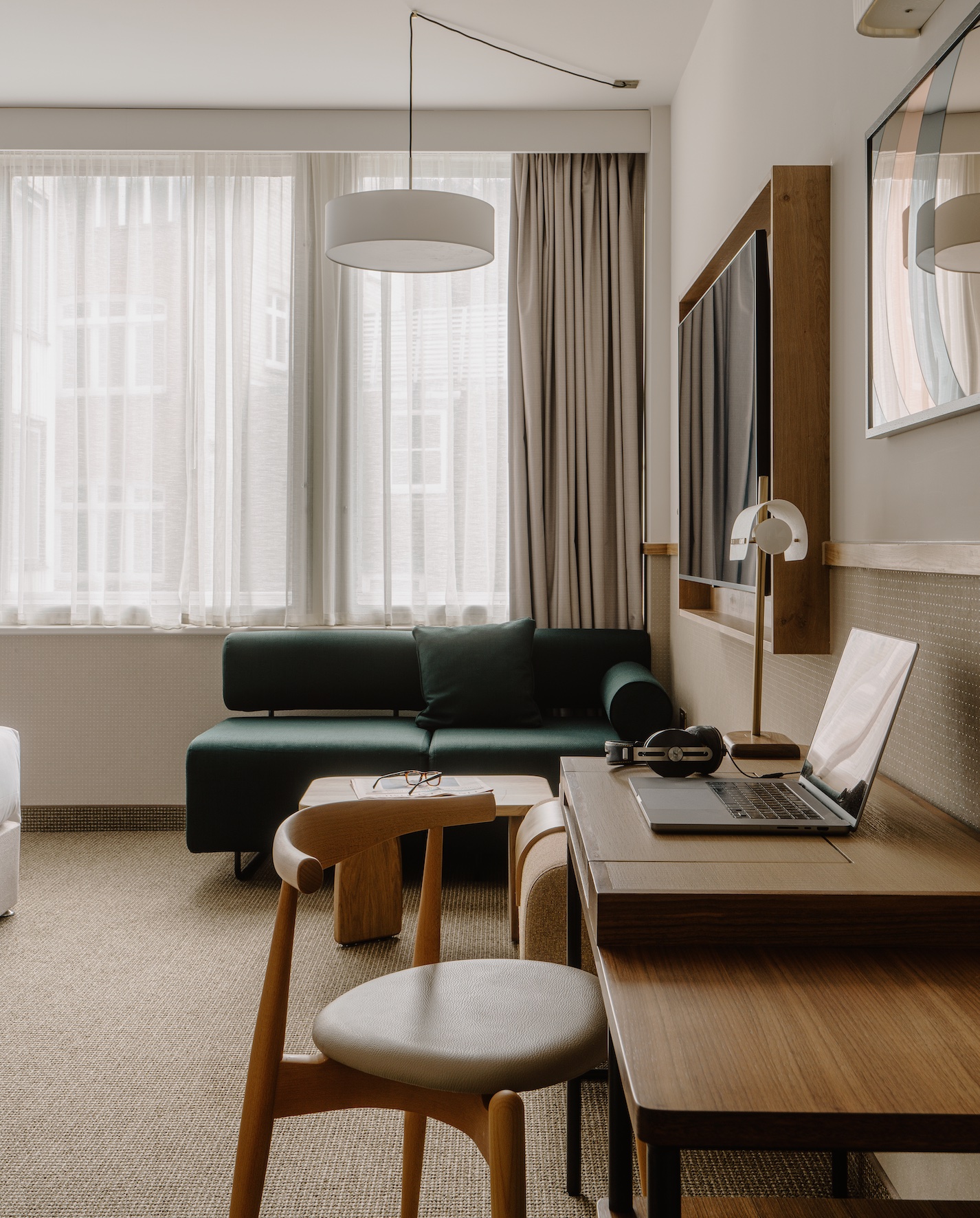
Holloway Li has a track record in this area of design. Its work for the Locke group – notably London’s Bermonds Locke – developed a well-honed vision for the sort of ‘third space’ sought by travellers who want to work in comfort while on the move. Bringing its customary wealth of colour, richly textured finishes and storied approach, the studio is creating co-working lounges for hospitality spaces that meld a sense of wonder and warmth with office functionality.
“If you make the lounge a high-quality workspace, people are more likely to work here than in their rooms and it will drive more culture to the hotel,” says Holloway, who also pushed for the café element here, arguing that if you have the option of a nice coffee instead of a push- button brew, you are more likely to hang around to work than go elsewhere.
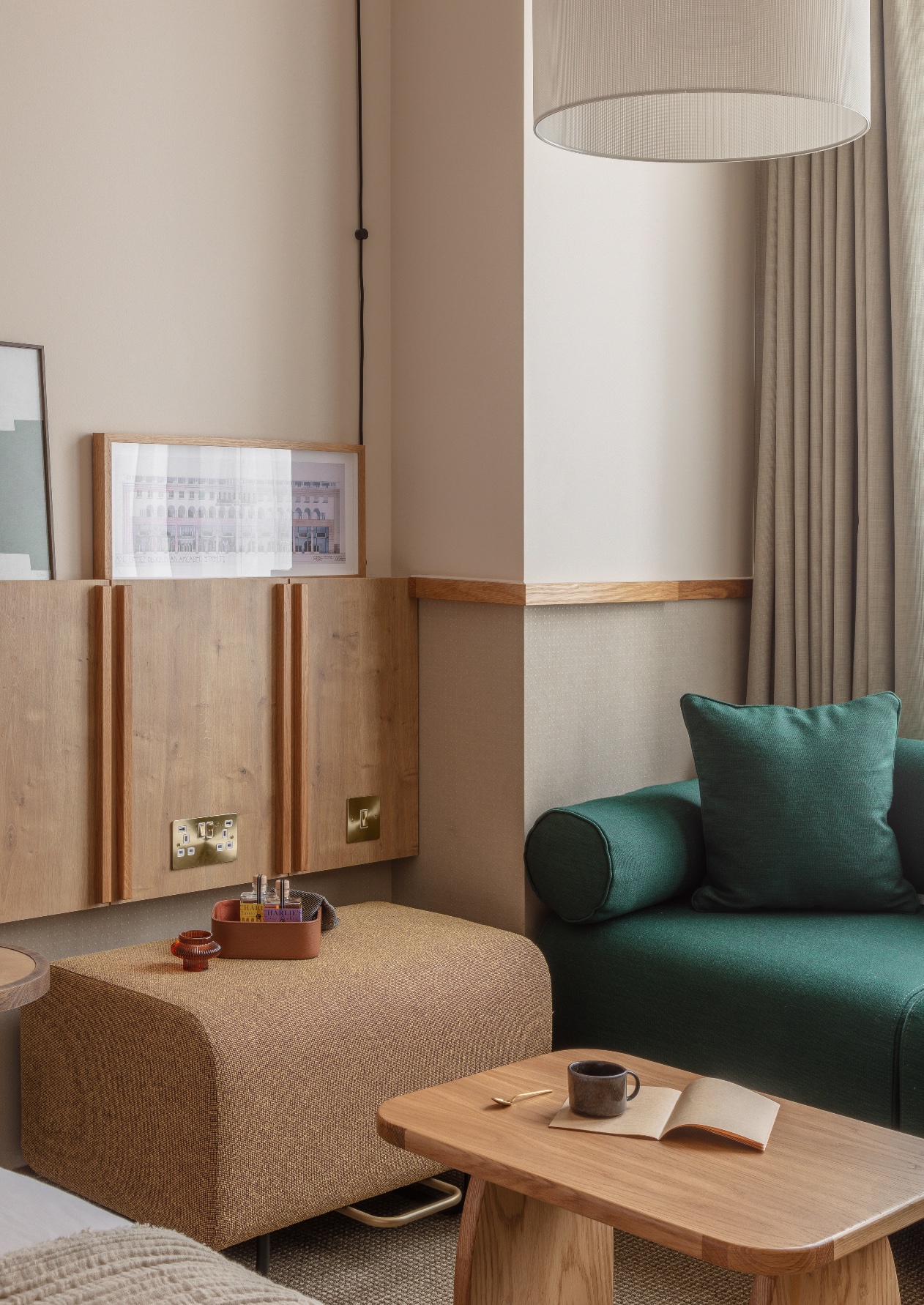
The studio’s design update for Club Quarters St Paul’s pivots around the post-war inflections of the host building’s architecture, including the abstract sculptures on the facade by mid-century artist Geoffrey Wickham and the dark wood interior. These combined to inspire the lobby’s standout cherry-wood wall, digitally drawn and cleverly crafted with the help of London furniture maker James Trundle.
In the lounge, the visual anchor is the striking blue lava-stone table with its five-metre glazed surface. Designed in collaboration with Pyrolave, it features perfectly integrated sockets at intervals that guarantee no one is far from their charging needs. “It’s a vivid art piece in itself that the whole space flows around,” says Holloway. “This is a generous thing to do as a hospitality provider, because if someone is going to be working there for half a day, at least they have something very beautiful to sit at. It’s the essence of hospitality – offering something luxurious that people wouldn’t get in their own homes.”
Another magnanimous move is the variety of seating options on offer. If you don’t want to pull a Marcel Breuer Cesca up to the blue table, you can pitch camp on a curved banquette, lounge around a coffee table, take sensitive calls in a custom wooden booth, or perch on a high chair facing a partitioned bar-style ledge. There’s no doubt that affordability and no-fuss efficiency still resonates with business travellers in 2024, but offer a multi-tasking co-working space layered with narrative and homely comforts – plus an unbeatable brew – and you capture the worker who might just extend their stay for a spot of some much-needed leisure time.
Images by Nicholas Worley
Enjoyed this article? Subscribe to our weekly newsletter here

